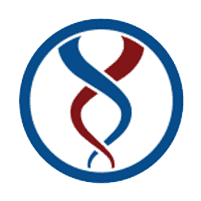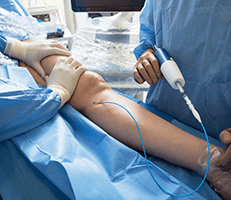Peripheral Vascular Disease

Acadiana Vascular Clinic:
Vein Center of Louisiana
Board Certified Vascular Surgeons located in
Lafayette, LA
When your blood supply is compromised, such as with peripheral vascular disease (PVD) and peripheral artery disease (PAD), it can cause a number of long-term complications, including blood clots and varicose veins. The experienced providers at the Vein Center of Louisiana in Lafayette, Louisiana, treat all forms of PVD, reducing your symptoms and your risk of long-term circulatory problems. For an expert evaluation, call or request an appointment online today. The practice serves those in Lafayette, Lake Charles, Alexandria and the surrounding areas.

Acadiana Vascular Clinic:
Vein Center of Louisiana
Board Certified Vascular Surgeons located in
Lafayette, LA
When your blood supply is compromised, such as with peripheral vascular disease (PVD) and peripheral artery disease (PAD), it can cause a number of long-term complications, including blood clots and varicose veins. The experienced providers at the Vein Center of Louisiana in Lafayette, Louisiana, treat all forms of PVD, reducing your symptoms and your risk of long-term circulatory problems. For an expert evaluation, call or request an appointment online today. The practice serves those in Lafayette, Lake Charles, Alexandria and the surrounding areas.
Peripheral Vascular Disease Q & A
What is peripheral vascular disease?
Peripheral vascular disease (PVD) refers to several conditions that affect the circulatory system outside of the heart. This includes conditions that affect the arteries, veins, lymph vessels, and capillaries, particularly in the extremities.
Forms of PVD include:
- Varicose veins
- Reticular veins
- Spider veins
- Thrombophlebitis, or inflammation of the veins
- Deep vein thrombosis (DVT), or blood clots
- Chronic venous insufficiency
- Peripheral artery disease
With PVD, blood flow is compromised due to narrowing, inflammation, spasm, or blockage of the vessels. Forms of PVD can be slow moving and progressive, and may cause long-term complications if not treated effectively.
What are symptoms of peripheral vascular disease?
For roughly half of those positively diagnosed with PVD, there are no symptoms. For those who have symptoms, they may experience:
- Leg cramps
- Pale, thin, or brittle skin
- Bulging and tender blood vessels
- Tingling or numbness in legs or feet
- Weak pulses
- Erectile dysfunction
- Hair loss or shiny skin
- Slow-healing wounds
- Pain, aching, and burning in extremities
You’re at greater risk for PVD if you smoke, are obese, or have a sedentary lifestyle, or if you have diabetes, high blood pressure, high cholesterol, or heart disease.
What is peripheral artery disease?
Peripheral artery disease (PAD) is a form of PVD that affects the arteries of the extremities. Often called the leg artery disease, PAD inhibits the normal return of blood to the heart, causing discomfort as the tissues in the extremities are deprived of oxygen-rich blood.
PAD often causes pain or discomfort in the:
- Hips
- Buttocks
- Thighs
- Knees
- Shins
- Tops of feet
You may not experience pain, but rather tightness, heaviness, cramping, or weakness. If your PAD is severe or advanced, you may have sores that don’t heal that could lead to gangrene, an infection that kills the tissues.
What treatments are available for PVD and PAD?
Depending on the severity of your disease, your provider may suggest treatments including:
- Lifestyle changes
- Medications
- Exercise
- Angioplasty or stents, to restore blood flow
- Amputation, to remove gangrene and dead tissues
Limb loss is a significant potential risk for those with PVD and PAD, which is why it’s important to seek treatment and follow your physician’s guidance and treatment plan.
For a screening or consultation regarding PVD or PAD, call or book an appointment online with the Vein Center of Louisiana.
What is claudication?
Claudication is caused by peripheral arterial disease or blockage of the blood vessels in the legs. Claudication is the cramping, pain and tightness in the calf, thigh or buttock that happened when you are walking. The distance of you walking is determined by the degree of blockage in the blood vessels; the more blockage there are, the shorter the walking distance would be.
What is rest pain?
Rest pain occurs when you have severe peripheral arterial disease. The pain in your legs would occur all the time at rest. You would always experience burning sensation in your foot and would wake up multiple times at night to the pain in the legs.
What are ways to improve leg circulation without surgery?
There are multiple strategies to improve claudication without surgery by modify the routines in your life. If you are a smoker, decreasing smoking or cessation of smoking, manage blood sugar well and exercise or attempt a walking regimen. Also, your doctor might prescribe medications to improve the walking distance without pain.
What is a bypass surgery?
Bypass surgery is a procedure perform to bypass or go around blockage in the blood vessels. The procedure can by perform by a vascular surgeon with the vein from your leg or artificial vessel to provide blood to the leg.
What is exercise therapy?
Exercise therapy is an exercise regimen in a control environment to help patients who have claudication symptoms to improve the walking distance and can performed daily activities with less pain in their legs.
What is an angiogram?
Angiogram is a procedure performed by your surgeon to look at the blood vessels by using a needle to access the blood vessel in leg or arm to evaluate for blockage or narrowing of blood vessels using contrast dye. When performing an angiogram, if you have blockages in your arteries your surgeon can open the blockage with balloon, stent, laser or other devices to improve the blood flow to your legs.
What are the risks of PAD without surgery?
If you do not have wound(s) in your foot and you only have mild blockages in your legs, you would likely do not need surgery. However, you need to modify your lifestyle to prevent further blockages to the blood vessels including stop smoking, eat a heart healthy diet, exercising, and control your blood pressure and control of your blood sugar.
What are the restrictions after revascularization or surgery?
There are not a lot of restrictions after surgery to restore blood flow in your leg. You are encouraged to walk as tolerate and perform activities around the house as you are able and progressively increase your activities, refrain from taking bath or swimming until your wound heals. Avoid smoking and control blood sugar as these activities will slow down wound healing.
